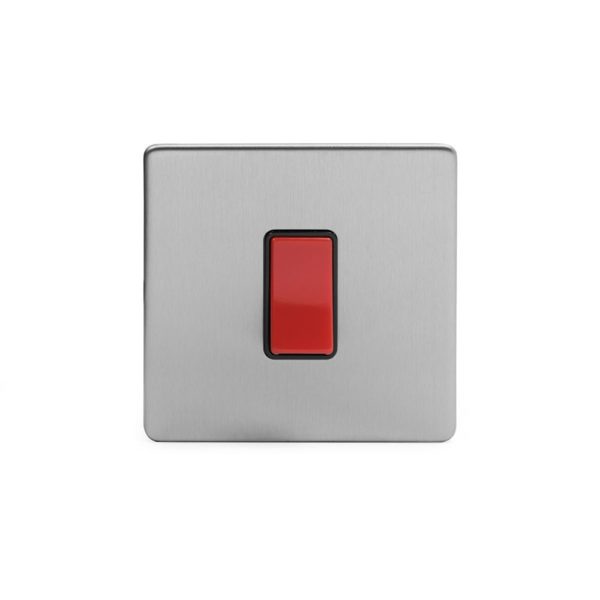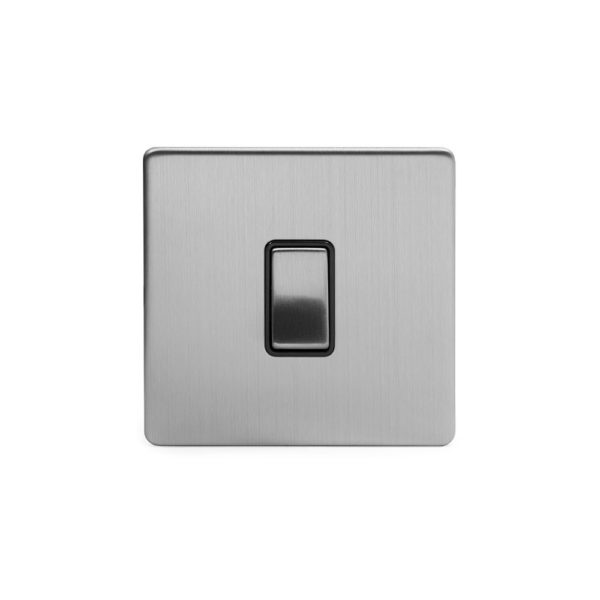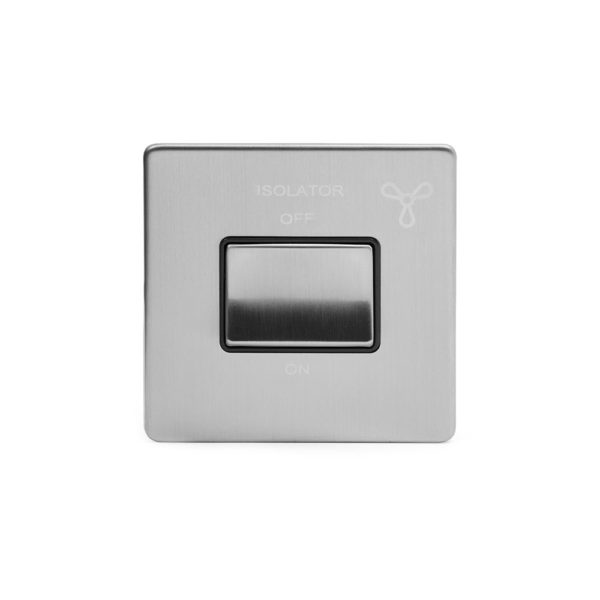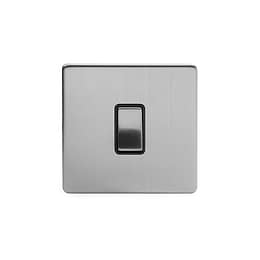Double Pole Switch vs Single Pole Switch
Double Pole Switch vs Single Pole Switch
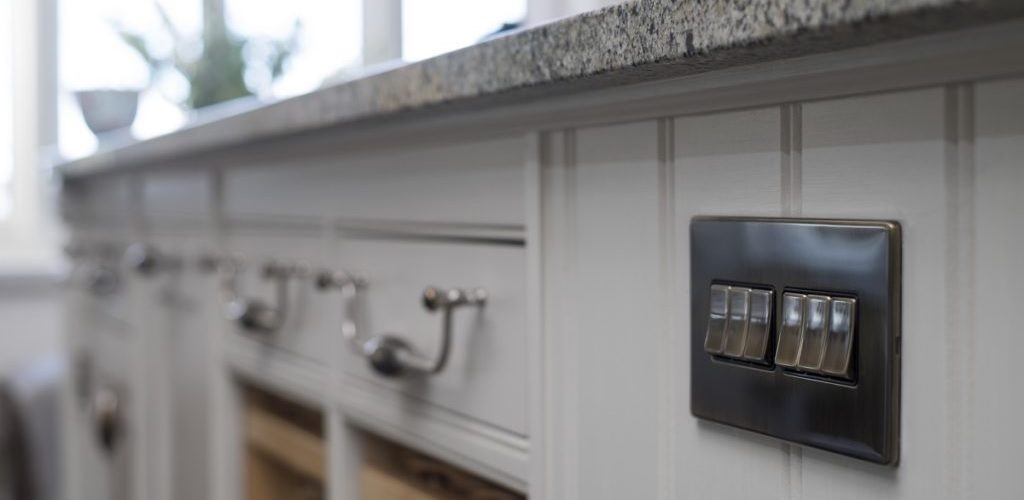
Planning out which sockets and switches you require for your home or project can lead to many different questions around the finish, style, and functionality. In this article, we discuss the difference between single pole and double pole switches and answer some common questions.
Put simply, a switch is a device that is used to control the flow of current within an electrical system. There are two different types of switches: the single pole and the double pole switch.
It’s also important to understand the difference between a pole and a throw as both single and double pole switches can have a different number of throws which change how they work.
What Is A Pole?
The pole of a switch refers to the number of separate circuits that the switch can control. Single pole switches control just one circuit whereas a double pole switch can control two circuits. So a double pole switch is almost like having two single pole switches, controlled by the same switch.
What is the difference between a pole and a throw?
A “Pole” refers to the number of circuits that one switch can control for one operation of the switch. The “Throw” indicates the number of contact points. The two most common types are single-throw and double-throw.
This means you can have four main types of switch configuration which are explained in the diagram below.
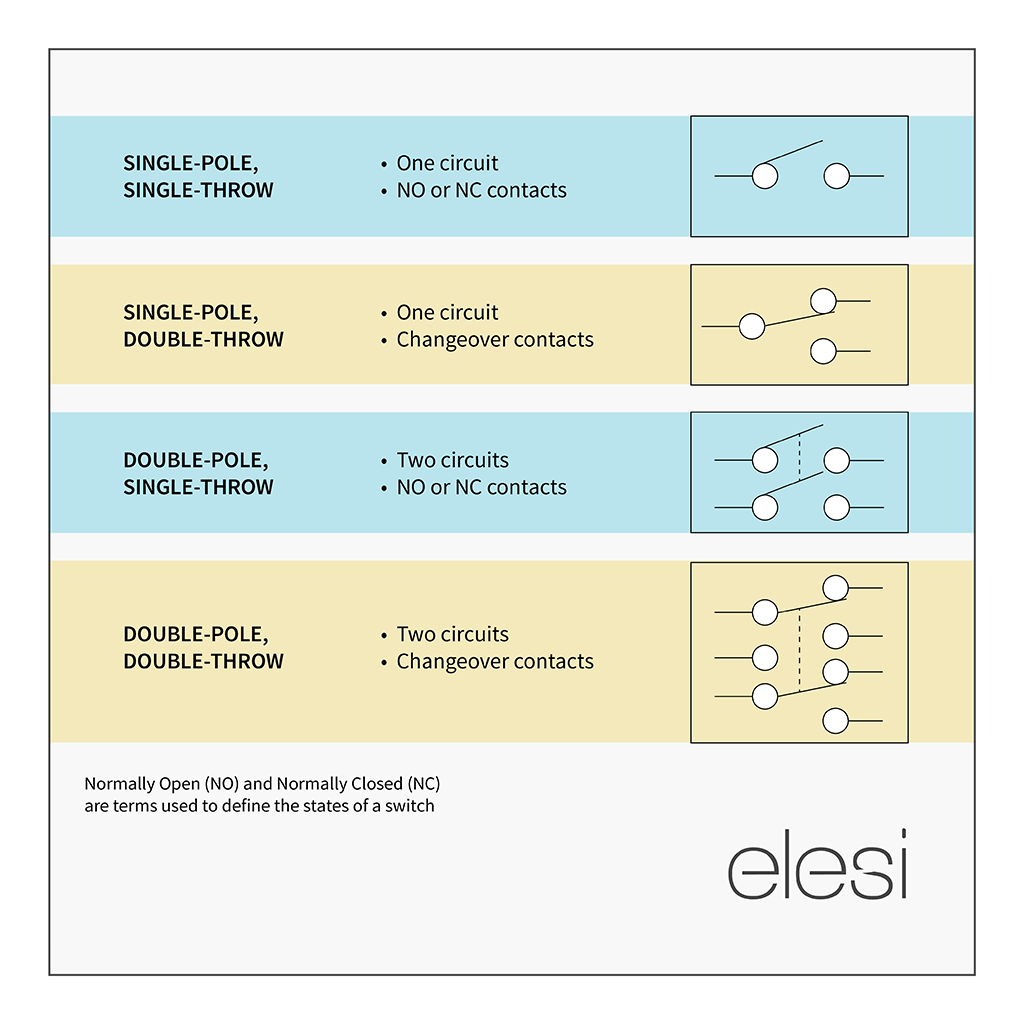
What Are Single Pole Switches?
Standard single pole switches are common, simple light switches. They are used to control one circuit and offer a regular off and on function for things like light fixtures. Most switches in a typical home tend to be single pole, whereas double pole switches are more common in industrial settings.
What Are Double Pole Switches?
A double pole switch controls two separate circuits. These types of switches make it possible to isolate appliances safely.
Double pole switches also tend to be used for appliances with heavy loads like cookers and showers. The wires that feed electricity to double pole switches tend to be larger than the wires that feed to single pole switches, as double pole switches are often used to control 240V circuits. Furthermore, they can be used as a safety shut-off for a residential appliance.
It is important that you check the rating of your product, however, as there are various types of double pole switches. A 20A double pole switch is likely to be only suitable for small ovens, whereas regular ovens are likely to need a 45A DP switch.

Double pole switches make it possible to isolate appliances safely from the power source. They tend to be used for appliances with heavy loads like cookers and showers. It is important that you check the rating of your product, however, as there are various types of double pole switches. A 20A double pole switch is likely to be only suitable for small ovens, whereas regular ovens are likely to need a 45A DP switch.
When do you use a double pole switch?
Double pole switches are used for appliances that require heavy loads. For example, cookers and showers. Double pole switches can also be used as a safety shut-off for a residential appliance.
Another reason to use a double pole switch is due to regulations that mean you need to have local means of isolation for certain products. So the double pole isolator isolates one particular socket that is behind a fridge for example.
If you are looking to buy sockets and switches, we have two useful guides on choosing the right ones for your home. They include matching switch and socket finishes to interior design styles and switch & socket function and selection.
If you’ve made your mind up then go ahead and browse our collection of double pole switches.
FAQs
A double pole socket switches both the live and neutral to ensure safe isolation of the plugged in appliance.
A double pole switch switches both the live and neutral to ensure safe isolation of the load circuit.
In theory you would only have 1-2 permanent live feeds and 1+ load lives. There are a number of different ways to wire lighting or isolation circuits so there could be a number of different combinations.
A switch module does not require grounding but the yoke and faceplate must always be grounded if the faceplate is made from metal. Most plastic switch plates do not need grounding due to it being a class 2 product.
Whilst a single pole socket is generally cheaper it is always preferred that customers/electricians install double pole sockets for safer isolation of the plugged in appliances.
The difference is simply the amount of poles being switched.
Single pole sockets are perfectly legal and are safe for many appliances, but it is safer to use double pole sockets. Therefore is always better to use double pole sockets in all situations.



